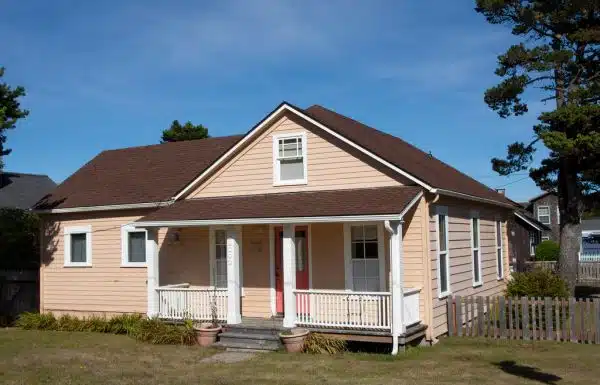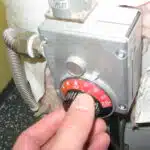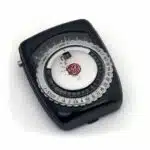As an HVAC technician, one of the most common requests we receive from homeowners is how to properly size an electric baseboard room heater. Choosing the right size heater for a room can be challenging but it is crucial for ensuring comfort and energy efficiency in the home. In this article, we will discuss important considerations for sizing electric baseboard heaters and provide tips for selecting the appropriate size unit based on room specifications.
When it comes to electric baseboard heaters, there are several factors that need to be taken into account in order to determine the proper size. The size of the room, insulation levels, ceiling height, windows and doors are all important variables that should be considered. Properly sizing a heater can save homeowners money on their energy bills by preventing overuse or underuse of heating equipment. Additionally, choosing a correctly sized heater ensures that the space is heated efficiently and effectively, creating a comfortable living environment for occupants.
Understanding Electric Baseboard Heaters
Electric baseboard heaters are a popular heating option for many homeowners. These heaters operate by converting electrical energy into heat, which is then radiated outwards to warm the surrounding air. Electric baseboard heater installation is easy and straightforward, making it a go-to choice for many DIY enthusiasts. However, it’s important to note that improper installation can result in reduced energy efficiency and even safety hazards.
Energy efficiency is a top priority for most homeowners, and electric baseboard heaters offer several energy efficiency tips that can help you save money on your monthly utility bills. One of the key advantages of electric baseboard heaters is their ability to provide zone heating. This means that you can heat only the rooms you’re using, rather than heating your entire home all the time. Additionally, many modern electric baseboard heaters come equipped with programmable thermostats that allow you to set customized temperature schedules throughout the day.
Proper sizing is important when it comes to selecting an electric baseboard heater for your home. If you choose a heater that is too small for your room size, it will have to work harder to maintain a comfortable temperature, leading to increased energy consumption and higher utility bills. Conversely, if you choose a heater that is too large for your room size, it will cycle frequently on and off, resulting in wasted energy and reduced lifespan of the unit. In the next section, we’ll look at why proper sizing is so important when choosing an electric baseboard heater for your home.
Why Proper Sizing Is Important
As an HVAC technician, it’s crucial to understand the importance of proper sizing when it comes to electric baseboard room heaters. Proper sizing ensures that the heater is both efficient and effective. If a heater is too small for the room, it won’t be able to maintain a comfortable temperature. Conversely, if the heater is too large for the space, it will continuously cycle on and off, leading to wasted energy and higher utility bills.
Efficiency is also an important consideration when it comes to electric baseboard room heaters. When a heater is appropriately sized, it can operate at its optimal efficiency level. This means that less energy is needed to provide warmth throughout the room. Properly sized heaters not only save money on utility bills but also reduce overall energy consumption, making them more environmentally friendly.
In summary, understanding why proper sizing is important for electric baseboard room heaters cannot be overstated. Efficiency and effectiveness are directly related to correct sizing, which ultimately saves money and reduces energy consumption. In the next section, we’ll discuss some factors that need to be considered when determining the appropriate size of an electric baseboard heater.
Factors To Consider When Sizing
Proper sizing of an electric baseboard room heater is crucial for efficient and effective heating. An oversized heater will consume more electricity, leading to higher energy bills, while an undersized one will not be able to provide adequate warmth. This is why it is important to determine the correct size of the heater before installation.
Several factors should be considered when sizing an electric baseboard room heater. The first factor is the size of the room in square footage. Larger rooms require more heat output than smaller ones. Additionally, consideration must be given to other factors such as ceiling height, insulation, and window size. These can impact the amount of heat loss from the room and affect the heating requirements.
Another important factor to consider when sizing a baseboard heater is its placement in the room. Heaters installed on exterior walls tend to lose more heat than those installed on interior walls due to heat loss through conduction. In addition, determining thermostat compatibility with your chosen heater model is critical since different heaters may have specific thermostats that work best with them – this ensures proper temperature regulation throughout your space.
In summary, selecting a correctly sized electric baseboard room heater involves careful consideration of various factors such as room size and other environmental conditions alongside choosing a product compatible with your thermostat system setup. Proper placement also plays a role in ensuring efficient heating performance from your unit by minimizing heat loss from exterior walls. Next up we’ll explore how you can determine your necessary room size for maximum benefit!
Determining Room Size
Accurately measuring the room dimensions is a critical step in determining the required capacity for an electric baseboard room heater. Estimating the room area by multiplying the length and width of the room together is also a key factor to consider when selecting the correct heater. HVAC technicians must factor in the additional space that must be heated, such as closets and alcoves, when calculating the required capacity for the heater. Estimating the total heat loss of the room is also necessary to ensure the electric baseboard heater has the capacity to adequately heat the space. The total heat loss is determined by calculating the insulation value of the walls, ceiling, and floor, as well as the size of all the windows and doors. With these values in hand, HVAC technicians are able to determine the capacity of the electric baseboard heater that is needed for the room.
Measuring Room Dimensions
As a HVAC technician, accurately measuring the dimensions of a room is crucial to determine the appropriate size for an electric baseboard room heater. Measuring accuracy is key to ensuring that the heater will effectively heat the entire space without wasting energy or overheating the area. To measure accurately, use a tape measure to measure from wall to wall in all directions, taking into account any angles or corners.
Common mistakes when measuring room dimensions include forgetting to account for doorways and windows, which can significantly affect the amount of heat needed in the space. It is also important to consider ceiling height as taller ceilings may require more heating power. Another mistake is failing to consider whether the room has proper insulation or not, which can impact how much heat is needed.
In conclusion, measuring room dimensions accurately is essential for determining the correct size of an electric baseboard room heater. Avoid common mistakes such as forgetting to account for windows and doors and considering ceiling height and insulation levels. By taking these factors into account, you can ensure that your clients have a properly sized heater that will keep them comfortable during colder months while using energy efficiently.
Calculating Room Area
When it comes to selecting the right electric baseboard room heater, calculating the room area is an important step in determining the heating capacity needed to effectively warm up a space. As a HVAC technician, accurately measuring the dimensions of a room is only half the battle. You also need to calculate the total square footage of the room to ensure that you select a heater with enough heating power.
To calculate the room area, start by multiplying the length and width of each section of the room (e.g., from wall to wall) and adding up these values. If there are any alcoves or protrusions, measure these separately and add their areas to your total. Make sure to convert all measurements into feet before performing calculations. Once you have your total square footage, you can use this number to determine what size electric baseboard room heater is appropriate for the space.
It’s worth noting that calculating room area is just one factor in determining what size electric baseboard room heater your client needs. Other factors include ceiling height, insulation levels, and whether there are any windows or doorways that could impact heat loss/gain. By taking all these factors into account, you can recommend an appropriately sized heater that will keep your client comfortable while using energy efficiently.
Estimating Heater Capacity
As an HVAC technician, determining the appropriate size of an electric baseboard room heater is crucial in providing comfort to your clients. Calculating the room area is only the first step, as other factors must also be considered. One of these factors is estimating the heater capacity needed to meet peak usage without sacrificing cost efficiency.
Estimating heater capacity involves calculating the amount of heat required to raise the temperature in a room by one degree over a certain period. To do this, you need to know the specific heat capacity of the materials in the room and their respective temperatures. You also need to take into account any heat loss through windows, doors, or walls. By considering all these variables, you can determine how much heating power is necessary for a particular space.
Selecting a heater that provides too little heating power will result in discomfort and wasted energy, while choosing a unit with too much capacity may lead to unnecessarily high electricity bills. As such, it’s important to strike a balance between peak usage and cost efficiency when selecting an electric baseboard room heater for your client. By estimating heater capacity accurately and taking into account other variables like insulation levels and ceiling height, you can recommend a product that meets both their comfort needs and budget constraints.
Measuring Ceiling Height
Did you know that ceiling height plays a significant role in determining the proper size of an electric baseboard room heater? According to industry standards, the average ceiling height of a residential home is around eight feet. However, some homes have higher ceilings, ranging from nine to twelve feet. This difference in ceiling height can greatly affect the heating output needed for a given space.
When measuring ceiling height, measuring accuracy is crucial to ensure accurate calculations. To achieve this, you will need a tape measure and a level. Begin by placing one end of the tape measure on the floor and extending it to the ceiling. Make sure to keep it straight with the help of your level to get an accurate measurement. Repeat this process in different areas of the room as ceilings may not always be level.
It’s important to note that measuring only one area may not provide an accurate representation of the entire room’s dimensions. Therefore, we recommend taking multiple measurements at different points and averaging them out. By doing so, you can ensure proper sizing and avoid over or undersizing your electric baseboard room heater. Once you have measured your ceiling height accurately, you can proceed with assessing insulation levels in your home to determine how much heat loss occurs within your space.
Assessing Insulation Levels
Having measured the ceiling height, the next step in sizing an electric baseboard room heater involves assessing insulation levels. Insulation is a critical factor in determining the amount of heat required to warm up a space. It helps to retain heat inside the room and prevents it from escaping through walls, floors, ceilings, and other openings. Assessing insulation levels is important because it enables homeowners to identify areas that require improvement.
Assessing insulation can be done either as a DIY project or by hiring a professional HVAC technician. While the former is cost-effective, it may not necessarily provide accurate results. A professional HVAC technician has specialized tools and equipment that allow them to conduct more thorough assessments of insulation levels. They can also provide recommendations on how to improve insulation for maximum energy efficiency.
Improving insulation levels is essential for achieving optimal comfort and reducing energy costs. Here are some tips that can help homeowners improve their home’s insulation:
- Seal air leaks around windows, doors, and other openings.
- Add weather-stripping to doors and windows.
- Install double-pane windows.
- Insulate attics, walls, floors, and ducts.
Assessing insulation levels is an important aspect of sizing an electric baseboard room heater. Homeowners can choose to assess their home’s insulation themselves or hire a professional HVAC technician for more accurate results. Improving insulation levels through proper sealing, weather-stripping, installing double-pane windows, and insulating various parts of the home can help reduce energy costs while increasing overall comfort. In the next section, we will discuss how to calculate window and door area for further accuracy in sizing your electric baseboard room heater.
Calculating Window And Door Area
Accurately measuring window and door area is essential to sizing an electric baseboard room heater. To measure the window area, one should measure the window frame on the inside and the outside, and then add the two results together. To measure the door area, one should measure the door frame on the inside and the outside, and add the two results together. The total of window and door area measurements will then need to be subtracted from the total room area to determine the baseboard heater size.
Measuring Window Area
When it comes to sizing an electric baseboard room heater, calculating window and door area is a crucial step. Measuring window area can help determine the amount of heat loss or gain that occurs in a room due to windows, which can then be used to choose the right heater model and calculate wattage needs.
To measure window area, start by measuring the height and width of each window frame. Then, multiply those two measurements together to get the total square footage of each window. Add up the square footage of all windows in the room to get the total window area. It’s important to note that not all windows are created equal – single-pane windows will allow more heat loss/gain than double-paned or insulated windows.
Once you have calculated total window area, you can use this information to choose the right electric baseboard heater for your room. Generally speaking, you’ll want 10 watts of heating power per square foot of living space in well-insulated rooms with average ceiling heights (8 feet). However, if your room has high ceilings or poor insulation, you may need more wattage per square foot. By accurately measuring your window area and factoring in other variables like ceiling height and insulation quality, you can ensure that you choose a heater model that will provide adequate heating without being too powerful (or too expensive to operate).
Measuring Door Area
As a HVAC technician, accurately determining the square footage of windows and doors in a room is essential to properly sizing an electric baseboard room heater. While measuring window area is an important step, it’s equally important to measure door area as well. In fact, doors can sometimes be even more problematic than windows when it comes to heat loss or gain, especially if they are old or ill-fitting.
To measure door area, start by measuring the height and width of each door frame using a measuring tape. Then, multiply those two measurements together to get the total square footage of each door. Additionally, take note of the threshold width – this is the space between the bottom of the door and the floor. Accurate measurements of both door area and threshold width will help determine how much heat transfer occurs through doors in a given room.
Once you have calculated total window and door area for a room, you can use this information to choose the right size electric baseboard heater for your needs. By factoring in variables like ceiling height and insulation quality as well as window and door area, you can ensure that you select a heater model that will provide adequate heating without being too powerful or inefficient. Remember: accurate measurements are crucial for getting an accurate wattage calculation!
Factoring In Room Usage
When sizing an electric baseboard room heater, it is important to factor in the room’s usage. This means considering what the room is primarily used for and how often it is occupied. A bedroom may require less heating than a living room or kitchen, for example. Additionally, if a room is only used occasionally, such as a guest room, then a smaller heater may suffice compared to a frequently used space like a home office.
Table: Room Function vs Heating Needs
| Room Function | Heating Needs |
|---|---|
| Bedroom | Low to Moderate |
| Living Room | Moderate to High |
| Kitchen | High |
| Home Office | High |
Another consideration when factoring in room usage is the overall temperature of the home. If the rest of the house stays relatively warm, then a smaller heater may be appropriate for each individual room. On the other hand, if the house tends to be cooler overall, then larger heaters may be needed in order to effectively heat each space.
Ultimately, taking into account the function of each room and its heating needs will help determine what size electric baseboard heater is appropriate. Keep in mind that oversized heaters can lead to wasted energy and increased utility bills while undersized heaters will not effectively heat the space. By carefully considering these factors, you can choose the right wattage for your electric baseboard heater and ensure comfortable temperatures throughout your home.
Transitioning into the next section about choosing the right wattage requires an understanding of how much power different sized rooms need in order to stay warm and comfortable.
Choosing The Right Wattage
As an HVAC technician, one of the primary concerns when sizing an electric baseboard room heater is wattage estimation. This involves calculating the amount of heat required to maintain comfortable temperatures in a specific room. The calculation is based on several factors such as room size, insulation quality, and external temperature.
However, there is another vital aspect that must be considered: budget constraints. While it’s essential to select a heater with sufficient wattage to meet your heating needs, it’s also crucial to stay within your budget. Overspending on a high-wattage heater will lead to unnecessary expenses that could have been avoided by selecting a more affordable option.
In summary, balancing wattage estimation and budget constraints is critical when sizing an electric baseboard room heater. As an HVAC technician, I always advise my clients to consult with professionals who can help them make informed decisions. With expert guidance and careful consideration of these factors, you can select the perfect electric baseboard room heater for your home or business needs. Now let’s delve into another critical factor when selecting the correct voltage for your electric baseboard room heater.
Selecting The Correct Voltage
Voltage compatibility is an important consideration when selecting an electric baseboard room heater. The voltage of the heater should match the voltage of the electrical system in the building. If a heater with the wrong voltage is installed, it may not function properly and could even be a safety hazard.
Power consumption is another factor to consider when selecting an electric baseboard room heater. The power consumption of the heater will depend on its wattage rating and how many hours per day it will be used. It’s important to choose a heater that has enough power to adequately heat the space, but not so much power that it becomes inefficient or costly to operate.
To ensure proper sizing of an electric baseboard room heater, here are some steps to follow:
- Determine the square footage of the room.
- Calculate the required wattage by multiplying the square footage by 10 (for standard 8-foot ceilings).
- Choose a heater with a wattage rating that matches or exceeds the calculated requirement.
- Consider additional factors such as insulation, windows, and ceiling height that may affect heating needs.
Finding the right length for your electric baseboard room heater is also crucial in ensuring optimal performance and efficiency. By following these guidelines for voltage compatibility and power consumption, you can select a properly sized heating unit for your space and enjoy comfortable living conditions during cold weather months without worrying about high energy costs or safety risks.
Finding The Right Length
- Accurately sizing an electric baseboard room heater requires consideration of the room dimensions, calculation of the wattage needed and careful consideration of any heat loss factors.
- Room dimensions, such as the length and width, help to determine the size of the heater needed to provide sufficient heat.
- The wattage required for a baseboard room heater is calculated by determining the total British Thermal Units (BTUs) for the room and then converting them to watts.
- Heat loss factors must be taken into account, such as wall insulation, window efficiency, air infiltration and the number of people in the room.
- HVAC technicians must use their expertise to determine the best size for an electric baseboard room heater after taking all of these factors into consideration.
- The correct size for an electric baseboard room heater is determined by considering the room dimensions, calculating the wattage needed and taking into account any heat loss factors.
Size By Room Dimensions
Calculating the appropriate size of an electric baseboard room heater can be a daunting task. However, it is crucial to ensure that the heating system is correctly sized to provide optimal warmth and comfort in a room. One way to determine the right length for an electric baseboard heater is by considering the dimensions of the room. A larger room will require a more substantial heating unit than a smaller one, which means that the length of the heater should be proportional to the size of the space.
To calculate the necessary BTUs required for a specific room, multiply its square footage by 10. This calculation will give you an indication of how much heat output is necessary to warm up your room adequately. Another factor to consider when sizing your electric baseboard heater is climate conditions. If you live in colder regions, you may need a larger unit with more heating power to compensate for extreme weather conditions.
Adjusting for climate conditions will help ensure that your electric baseboard heater functions efficiently throughout the year. It is essential to choose a model with adjustable thermostats and timers that allow you to regulate temperature control effectively. By doing this, you can save energy and reduce your electricity bills while still maintaining comfortable warmth in your home or office space. With these considerations, finding the right length for your electric baseboard heater should be easier and more accurate.
Calculating Wattage Needed
As an HVAC technician, finding the right electric baseboard heater length is essential to ensure optimal warmth and comfort in any room. However, determining the correct size can be challenging, especially when considering factors like climate conditions and room dimensions. While calculating the BTUs required for a specific space is helpful, it is also necessary to determine the wattage needed to operate your electric baseboard heater efficiently.
Calculating the wattage needed for your electric baseboard heater involves taking into account several factors. One of these factors is the voltage of your heating system. Most electric baseboard heaters operate at 240 volts, which means that you must calculate the wattage using this voltage. Another factor is insulation levels in your home or office space. If your space has poor insulation, you may need a higher wattage heater to compensate for heat loss.
Efficiency tips and cost savings are crucial considerations when choosing an appropriate wattage for your electric baseboard heater. To save energy and reduce electricity bills, consider selecting models with adjustable thermostats and timers that allow you to regulate temperature control effectively. Additionally, choosing a model with insulated covers or fins can help maintain consistent heat output while reducing overall energy usage. By keeping these efficiency tips in mind when calculating the wattage needed for your electric baseboard heater, you can ensure that it functions optimally while providing comfortable warmth throughout any space.
Heat Loss Factors
As an HVAC technician, finding the right length for an electric baseboard heater is crucial to ensure efficient and effective heating in any space. However, one of the biggest challenges when selecting an appropriate length is accounting for heat loss factors. Heat loss refers to the amount of heat that escapes from a room through walls, windows, and other sources. Calculating BTU output and conversion factors can help determine how much heat your space loses and what size heater you need to compensate.
One factor that contributes significantly to heat loss is poor insulation. If your home or office has inadequate insulation, more heat will escape through walls and ceilings, making it difficult to maintain a consistent temperature throughout the space. Additionally, air leaks around windows and doors can also cause significant heat loss. By properly insulating your home or sealing any air leaks, you can reduce heat loss and ensure that your electric baseboard heater functions optimally.
Another factor that affects heat loss is room dimensions. Larger rooms generally require higher wattage heaters to maintain comfortable temperatures since more warm air disperses into the space. Similarly, rooms with high ceilings require more energy to heat than those with lower ceilings since hot air rises upwards instead of staying close to the ground where people are located. By taking these factors into account when selecting an electric baseboard heater length, you can ensure optimal warmth and energy efficiency in any room.
Considering Additional Features
After finding the right length for your electric baseboard room heater, it is important to consider additional features that may benefit your specific needs. One such feature to consider is smart thermostat compatibility. A smart thermostat can help you control and monitor the temperature of your room heater, even when you are away from home. This feature can save you money on energy bills by optimizing the temperature settings based on your daily routine.
Another factor to take into account when sizing an electric baseboard room heater is its energy efficiency ratings. The higher the rating, the more efficient the heater will be in converting electricity into heat. The most common energy efficiency rating system used for residential heaters is called AFUE (Annual Fuel Utilization Efficiency). An AFUE of 100% means that all of the energy consumed by the unit is converted into heat, which is ideal. However, most electric baseboard room heaters have an efficiency rating between 75-95%.
To help you further in selecting a suitable electric baseboard room heater for your needs, refer to this table below for some popular models and their corresponding features:
| Model | Length | Wattage | Smart Thermostat Compatibility |
|---|---|---|---|
| A | 48″ | 1500W | Yes |
| B | 60″ | 2000W | No |
| C | 72″ | 2500W | Yes |
Overall, there are many factors to consider when sizing an electric baseboard room heater, including length, additional features like smart thermostat compatibility, and energy efficiency ratings. It’s crucial to select a model that fits your unique requirements and budget while still being cost-effective in the long run. If you’re unsure about what size or type of electric baseboard room heater would best suit your needs, consulting a professional HVAC technician would be a wise choice.
Consulting A Professional
When it comes to sizing an electric baseboard room heater, there are numerous factors to consider. While some homeowners may attempt a DIY approach to this task, there are many pitfalls that can lead to inaccurate sizing and ultimately, inefficient heating. As an HVAC technician, I strongly recommend hiring an expert to help with this process.
One of the most common DIY sizing pitfalls is failing to take into account the unique needs of the space being heated. For example, a room with high ceilings or large windows will require more heat than a smaller room with standard features. Additionally, accurate sizing requires knowledge of insulation levels and other factors that can impact heating efficiency. Without this expertise, homeowners may end up purchasing a heater that is too small for their space, leading to inadequate heating and higher energy bills.
Hiring an expert ensures that all of these considerations are taken into account during the sizing process. With professional assistance, homeowners can rest assured that their new baseboard heater is properly sized for their specific needs and the unique characteristics of their living space. This not only ensures optimal heating performance but also helps save on energy costs in the long run.
Next, we’ll discuss how to install your new electric baseboard heater for optimal performance and safety.
Installing Your Heater
Consulting a professional is always recommended before installing an electric baseboard room heater. However, if you have decided to install it yourself, there are some things that you need to consider. One of the most important things is wiring considerations. You must ensure that the wiring in your home can handle the electrical load of the heater.
Before installing your heater, you should also think about thermostat placement. The thermostat is responsible for regulating the temperature of your room and maintaining a comfortable environment. Therefore, it needs to be installed in a location where it can accurately measure the temperature of the room and adjust accordingly. It’s best to place it on an interior wall, away from any drafts or direct sunlight.
Proper installation is essential for optimal performance of your electric baseboard room heater. However, maintenance is equally important. Regular cleaning and inspections help ensure that your heater operates efficiently and safely throughout its lifespan. In the next section, we will discuss how to maintain your electric baseboard room heater for optimal performance so that you can enjoy its benefits for years to come.
Maintaining Your Heater For Optimal Performance
A well-maintained electric baseboard room heater can provide optimal performance for years. As a HVAC technician, it is important to understand the importance of maintenance to ensure your heating system works efficiently. One cleaning technique is to remove any dust or debris from the grill and fins of the heater using a soft brush or vacuum cleaner. This should be done every few months to prevent blockages that can reduce airflow and cause overheating.
To maintain optimal performance, energy-saving tips should also be implemented. For instance, ensuring that furniture or other objects do not obstruct the airflow around the heater is essential. If left unchecked, this can lead to temperature imbalances in various parts of the room, resulting in uneven heating. It is also recommended to install a programmable thermostat that allows for customized temperature settings throughout the day.
In conclusion, maintaining your electric baseboard room heater requires simple yet effective cleaning techniques and energy-saving tips that can significantly enhance its performance and longevity. As an HVAC technician, it is essential to advise homeowners on how best to care for their heaters so they can enjoy comfortable living spaces without worrying about high heating bills or poor indoor air quality. By following these steps, you can ensure maximum comfort and efficiency while keeping your heating system running smoothly for years!
Conclusion
Electric baseboard heaters are a popular choice for heating individual rooms in homes and apartments. Proper sizing of these heaters is essential to ensure optimal performance and energy efficiency. Several factors need to be considered when sizing an electric baseboard heater, including the room size, ceiling height, and additional features such as windows or insulation.
Determining the room size is the first step in sizing an electric baseboard heater. This can be done by measuring the length and width of the room and multiplying them together to get the square footage. The ceiling height also needs to be taken into account as taller ceilings require more heat output. Additional features such as insulation or windows can also affect the heat loss in a room and should be considered when selecting a heater.
According to a study conducted by the U.S. Department of Energy, electric baseboard heaters are 100% efficient at converting electricity into heat. However, improper sizing can lead to wasted energy and increased utility bills. Consulting with a professional HVAC technician can provide valuable insight into properly sizing an electric baseboard heater for optimum performance.
In conclusion, proper sizing of an electric baseboard heater is crucial for efficient heating in individual rooms. Factors such as room size, ceiling height, and additional features should all be taken into consideration during selection. With guidance from a professional HVAC technician, homeowners can ensure they make informed decisions about selecting the right sized unit for their home heating needs. As stated by the U.S Department of Energy’s study on electric baseboard heaters’ efficiency rate at 100%, investing in properly sized units will save money on utility bills while providing comfortable temperatures throughout your living space.
Image Credits
- “120 Summers” by A.Davey (featured)





























